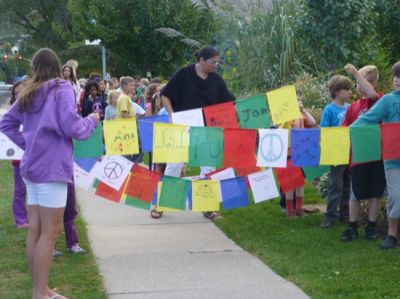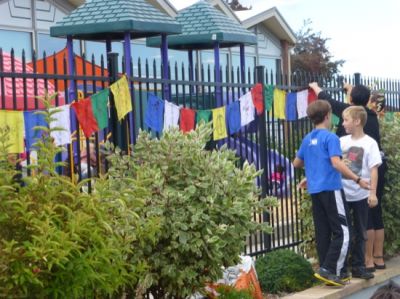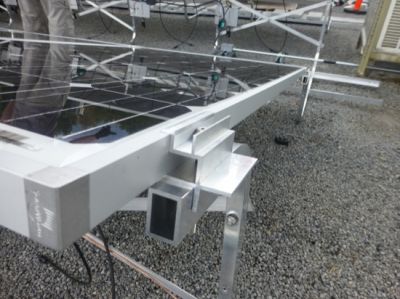YOUNG CHILDREN
September 2001
Five Reasons to Stop Saying “Good Job!”
By Alfie Kohn
NOTE: An abridged version of this article was published in Parents magazine in May 2000 with the title “Hooked on Praise.” For a more detailed look at the issues discussed here — as well as a comprehensive list of citations to relevant research — please see the books Punished by Rewards and Unconditional Parenting.
Para leer este artículo en Español, haga clic aquí.
Hang out at a playground, visit a school, or show up at a child’s birthday party, and there’s one phrase you can count on hearing repeatedly: “Good job!” Even tiny infants are praised for smacking their hands together (“Good clapping!”). Many of us blurt out these judgments of our children to the point that it has become almost a verbal tic.
Plenty of books and articles advise us against relying on punishment, from spanking to forcible isolation (“time out”). Occasionally someone will even ask us to rethink the practice of bribing children with stickers or food. But you’ll have to look awfully hard to find a discouraging word about what is euphemistically called positive reinforcement.
Lest there be any misunderstanding, the point here is not to call into question the importance of supporting and encouraging children, the need to love them and hug them and help them feel good about themselves. Praise, however, is a different story entirely. Here’s why.
1. Manipulating children. Suppose you offer a verbal reward to reinforce the behavior of a two-year-old who eats without spilling, or a five-year-old who cleans up her art supplies. Who benefits from this? Is it possible that telling kids they’ve done a good job may have less to do with their emotional needs than with our convenience?
Rheta DeVries, a professor of education at the University of Northern Iowa, refers to this as “sugar-coated control.” Very much like tangible rewards – or, for that matter, punishments – it’s a way of doing something to children to get them to comply with our wishes. It may be effective at producing this result (at least for a while), but it’s very different from working with kids – for example, by engaging them in conversation about what makes a classroom (or family) function smoothly, or how other people are affected by what we have done — or failed to do. The latter approach is not only more respectful but more likely to help kids become thoughtful people.
The reason praise can work in the short run is that young children are hungry for our approval. But we have a responsibility not to exploit that dependence for our own convenience. A “Good job!” to reinforce something that makes our lives a little easier can be an example of taking advantage of children’s dependence. Kids may also come to feel manipulated by this, even if they can’t quite explain why.
2. Creating praise junkies. To be sure, not every use of praise is a calculated tactic to control children’s behavior. Sometimes we compliment kids just because we’re genuinely pleased by what they’ve done. Even then, however, it’s worth looking more closely. Rather than bolstering a child’s self-esteem, praise may increase kids’ dependence on us. The more we say, “I like the way you….” or “Good ______ing,” the more kids come to rely on our evaluations, our decisions about what’s good and bad, rather than learning to form their own judgments. It leads them to measure their worth in terms of what will lead us to smile and dole out some more approval.
Mary Budd Rowe, a researcher at the University of Florida, discovered that students who were praised lavishly by their teachers were more tentative in their responses, more apt to answer in a questioning tone of voice (“Um, seven?”). They tended to back off from an idea they had proposed as soon as an adult disagreed with them. And they were less likely to persist with difficult tasks or share their ideas with other students.
In short, “Good job!” doesn’t reassure children; ultimately, it makes them feel less secure. It may even create a vicious circle such that the more we slather on the praise, the more kids seem to need it, so we praise them some more. Sadly, some of these kids will grow into adults who continue to need someone else to pat them on the head and tell them whether what they did was OK. Surely this is not what we want for our daughters and sons.
3. Stealing a child’s pleasure. Apart from the issue of dependence, a child deserves to take delight in her accomplishments, to feel pride in what she’s learned how to do. She also deserves to decide when to feel that way. Every time we say, “Good job!”, though, we’re telling a child how to feel.
To be sure, there are times when our evaluations are appropriate and our guidance is necessary — especially with toddlers and preschoolers. But a constant stream of value judgments is neither necessary nor useful for children’s development. Unfortunately, we may not have realized that “Good job!” is just as much an evaluation as “Bad job!” The most notable feature of a positive judgment isn’t that it’s positive, but that it’s a judgment. And people, including kids, don’t like being judged.
I cherish the occasions when my daughter manages to do something for the first time, or does something better than she’s ever done it before. But I try to resist the knee-jerk tendency to say, “Good job!” because I don’t want to dilute her joy. I want her to share her pleasure with me, not look to me for a verdict. I want her to exclaim, “I did it!” (which she often does) instead of asking me uncertainly, “Was that good?”
4. Losing interest. “Good painting!” may get children to keep painting for as long as we keep watching and praising. But, warns Lilian Katz, one of the country’s leading authorities on early childhood education, “once attention is withdrawn, many kids won’t touch the activity again.” Indeed, an impressive body of scientific research has shown that the more we reward people for doing something, the more they tend to lose interest in whatever they had to do to get the reward. Now the point isn’t to draw, to read, to think, to create – the point is to get the goody, whether it’s an ice cream, a sticker, or a “Good job!”
In a troubling study conducted by Joan Grusec at the University of Toronto, young children who were frequently praised for displays of generosity tended to be slightly less generous on an everyday basis than other children were. Every time they had heard “Good sharing!” or “I’m so proud of you for helping,” they became a little less interested in sharing or helping. Those actions came to be seen not as something valuable in their own right but as something they had to do to get that reaction again from an adult. Generosity became a means to an end.
Does praise motivate kids? Sure. It motivates kids to get praise. Alas, that’s often at the expense of commitment to whatever they were doing that prompted the praise.
5. Reducing achievement. As if it weren’t bad enough that “Good job!” can undermine independence, pleasure, and interest, it can also interfere with how good a job children actually do. Researchers keep finding that kids who are praised for doing well at a creative task tend to stumble at the next task – and they don’t do as well as children who weren’t praised to begin with.
Why does this happen? Partly because the praise creates pressure to “keep up the good work” that gets in the way of doing so. Partly because their interest in what they’re doing may have declined. Partly because they become less likely to take risks – a prerequisite for creativity – once they start thinking about how to keep those positive comments coming.
More generally, “Good job!” is a remnant of an approach to psychology that reduces all of human life to behaviors that can be seen and measured. Unfortunately, this ignores the thoughts, feelings, and values that lie behind behaviors. For example, a child may share a snack with a friend as a way of attracting praise, or as a way of making sure the other child has enough to eat. Praise for sharing ignores these different motives. Worse, it actually promotes the less desirable motive by making children more likely to fish for praise in the future.
Once you start to see praise for what it is – and what it does – these constant little evaluative eruptions from adults start to produce the same effect as fingernails being dragged down a blackboard. You begin to root for a child to give his teachers or parents a taste of their own treacle by turning around to them and saying (in the same saccharine tone of voice), “Good praising!”
Still, it’s not an easy habit to break. It can seem strange, at least at first, to stop praising; it can feel as though you’re being chilly or withholding something. But that, it soon becomes clear, suggests that we praise more because we need to say it than because children need to hear it. Whenever that’s true, it’s time to rethink what we’re doing.
What kids do need is unconditional support, love with no strings attached. That’s not just different from praise – it’s the opposite of praise. “Good job!” is conditional. It means we’re offering attention and acknowledgement and approval for jumping through our hoops, for doing things that please us.
This point, you’ll notice, is very different from a criticism that some people offer to the effect that we give kids too much approval, or give it too easily. They recommend that we become more miserly with our praise and demand that kids “earn” it. But the real problem isn’t that children expect to be praised for everything they do these days. It’s that we’re tempted to take shortcuts, to manipulate kids with rewards instead of explaining and helping them to develop needed skills and good values.
So what’s the alternative? That depends on the situation, but whatever we decide to say instead has to be offered in the context of genuine affection and love for who kids are rather than for what they’ve done. When unconditional support is present, “Good job!” isn’t necessary; when it’s absent, “Good job!” won’t help.
If we’re praising positive actions as a way of discouraging misbehavior, this is unlikely to be effective for long. Even when it works, we can’t really say the child is now “behaving himself”; it would be more accurate to say the praise is behaving him. The alternative is to work with the child, to figure out the reasons he’s acting that way. We may have to reconsider our own requests rather than just looking for a way to get kids to obey. (Instead of using “Good job!” to get a four-year-old to sit quietly through a long class meeting or family dinner, perhaps we should ask whether it’s reasonable to expect a child to do so.)
We also need to bring kids in on the process of making decisions. If a child is doing something that disturbs others, then sitting down with her later and asking, “What do you think we can do to solve this problem?” will likely be more effective than bribes or threats. It also helps a child learn how to solve problems and teaches that her ideas and feelings are important. Of course, this process takes time and talent, care and courage. Tossing off a “Good job!” when the child acts in the way we deem appropriate takes none of those things, which helps to explain why “doing to” strategies are a lot more popular than “working with” strategies.
And what can we say when kids just do something impressive? Consider three possible responses:
* Say nothing. Some people insist a helpful act must be “reinforced” because, secretly or unconsciously, they believe it was a fluke. If children are basically evil, then they have to be given an artificial reason for being nice (namely, to get a verbal reward). But if that cynicism is unfounded – and a lot of research suggests that it is – then praise may not be necessary.
* Say what you saw. A simple, evaluation-free statement (“You put your shoes on by yourself” or even just “You did it”) tells your child that you noticed. It also lets her take pride in what she did. In other cases, a more elaborate description may make sense. If your child draws a picture, you might provide feedback – not judgment – about what you noticed: “This mountain is huge!” “Boy, you sure used a lot of purple today!”
If a child does something caring or generous, you might gently draw his attention to the effect of his action on the other person: “Look at Abigail’s face! She seems pretty happy now that you gave her some of your snack.” This is completely different from praise, where the emphasis is on how you feel about her sharing
* Talk less, ask more. Even better than descriptions are questions. Why tell him what part of his drawing impressed you when you can ask him what he likes best about it? Asking “What was the hardest part to draw?” or “How did you figure out how to make the feet the right size?” is likely to nourish his interest in drawing. Saying “Good job!”, as we’ve seen, may have exactly the opposite effect.
This doesn’t mean that all compliments, all thank-you’s, all expressions of delight are harmful. We need to consider our motives for what we say (a genuine expression of enthusiasm is better than a desire to manipulate the child’s future behavior) as well as the actual effects of doing so. Are our reactions helping the child to feel a sense of control over her life — or to constantly look to us for approval? Are they helping her to become more excited about what she’s doing in its own right – or turning it into something she just wants to get through in order to receive a pat on the head.
It’s not a matter of memorizing a new script, but of keeping in mind our long-term goals for our children and watching for the effects of what we say. The bad news is that the use of positive reinforcement really isn’t so positive. The good news is that you don’t have to evaluate in order to encourage.







